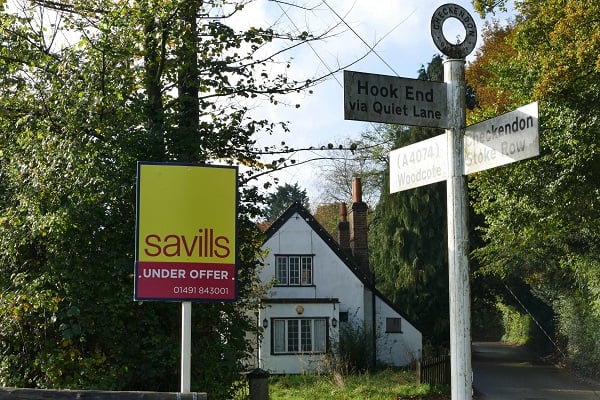Here’s why
Heathrow Airport’s proposal to build a third runway could result in some 2,100 people needing to be rehoused by the London Borough of Hillingdon, according to new calculations by Heathrow Hub.
Heathrow’s proposal to build a new North West Runway over the villages of Harmondsworth, Longford and Sipson will require the compulsory purchase and demolition of at least 783 houses.
As the average household size for the Heathrow villages is 2.7 people, we calculate that alternative housing will potentially need to be found by the London Borough of Hillingdon for some 2,100 people whose homes are compulsorily purchased. The London Borough of Hillingdon is currently controlled by the Conservative Party and is being contested in local elections on May 3rd.
While Heathrow Airport has said it will meet the compensation bill for landowners, no thought has apparently been given by either the Airport itself or the Department for Transport to the cost or logistics of rehousing those losing their homes and unable to find suitable new accommodation on reasonable terms. Guidance on compulsory purchase from the Ministry of Housing, Communities and Local Government is that this duty to rehouse falls to the Local Authority. It should also be a major consideration for Heathrow Airport Ltd and Chris Grayling, Secretary of State for Transport.
The 2,100 number could prove an under-estimate. Heathrow’s scheme would also severely affect communities abutting the new airport perimeter, notably in Sipson and Harlington (also in the Borough of Hillingdon) and Colnbrook (in the Borough of Slough). For example, Heathrow’s numbers assume properties immediately at the end of the NW runway are retained, when in reality they are unlikely to be habitable.
Heathrow Airport’s scheme has a further 5,500 homes within a so-called Wider Property Zone. According to the recent House of Commons Transport Select Committee report, within this zone “residents may have to move out of the area because of new and significantly adverse living conditions.” Assuming the same household size, the Wider Property Zone encompasses some 14,850 people who might need new homes.
By contrast, Heathrow Hub’s independent proposal to extend the northern runway (ENR) destroys far fewer houses and has a much lower community impact. While any loss of housing is a serious issue, the 242 affected houses are in Poyle and Colnbrook (Local Authority Slough) and are already at or near the end of the existing runway.
Average household size in this area is slightly smaller, at 2.4, making a total of 580 people. Heathrow Hub estimates its scheme would result in an offer of purchase of a further 203 households and an offer of insulation to 1,975, mostly in Horton and Datchet (both in the Royal Borough of Windsor and Maidenhead.) Many of these households already suffer noise.
Jock Lowe, Director of Heathrow Hub, the independent proposal for the Extended Runway, said: “Our scheme was created from the outset to minimise the impact on local communities. The extension of the northern runway has a far lower impact on housing stock. It is a simpler, cheaper and quieter scheme.
“Heathrow’s current proposal will put local housing under much greater pressure, particularly in the London Borough of Hillingdon. The Council will need to state how it intends to house a further 2,100 people. The lack of consideration in relation to housing is stark.
“We have written to Sajid Javid, the housing secretary, to ensure he is fully aware of the potential housing crisis in Hillingdon and Slough which Heathrow’s plans could cause. Local people are entitled to know how they will be rehoused and who will pay.
“It is not too late for the Cabinet to decide that the Department of Transport has made a mistake by allowing Heathrow Airport to effectively veto our cheaper, simpler, quieter scheme, simply on the grounds it is cheaper and consequently makes less money for their shareholders.”






Leave a Comment